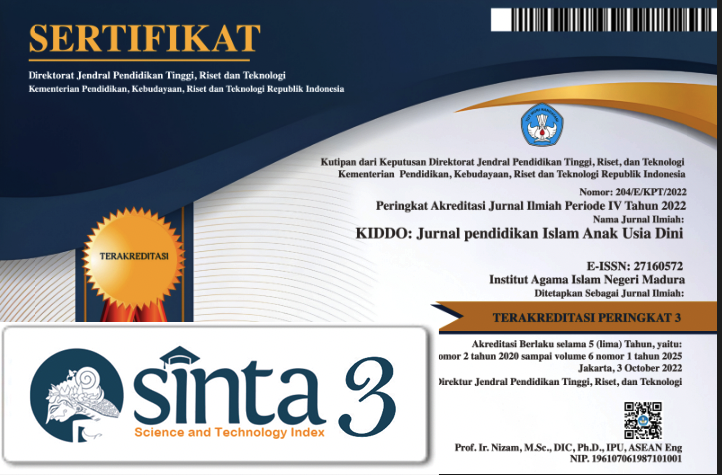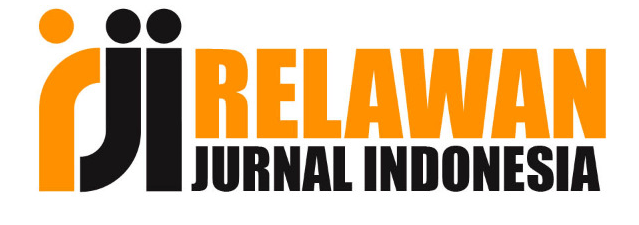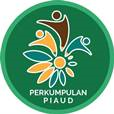Pengaruh Metode Pembelajaran Berbasis Proyek Kerajinan Gerabah Terhadap Kreativitas Anak Usia Dini
 Abstract views: 267
,
Abstract views: 267
,
 PDF downloads: 190
PDF downloads: 190
Abstract
Learning methods are the methods used to implement learning plans which are prepared in the form of real and practical activities to achieve learning objectives. In order for the learning process to be effective and enjoyable, learning methods must be varied and appropriate to the child's development. However, research in the field shows that the learning methods most often used by teachers are monotonous and uninteresting. Creativity is very important in early childhood education because children's cognitive development will be honed if they are creative. This is because creativity increases their intelligence and ability to express themselves and develop new ideas. . The pottery craft project-based learning method is suitable for the learning process in early childhood because it is interesting. This research aims to see how much influence this learning method has on the creativity of young children. This research uses quantitative research methods, with a one group pretest-posttest design, data analysis techniques using the Wilcoxon sign rank test. The results of this test show that each subject experienced an increase in aspects of their creativity, for example, children began to be able to produce an idea, children were able to create or combine unique and interesting works in front of other people, children were able to create or produce their own work without copying the theme, and without Of course, children are able to develop new works, and children are also able to improve the details of their own work, apart from that, children also feel happy and not bored because learning using this pottery craft project-based method is very interesting and suitable for application in children's learning.
Downloads
References
Alfiana, A. (2023). Perngaruh Mertoder Permberlajaran Proyerk Derngan Kergiatan Kolaser Terrhadap Krerativitas Anak Pada Kerlompok B dI Taman Kanak-Kanak Perrtiwi DWP SErTDA PROV. SUL-SErL.
Amerlia, N., & Aisya, N. (2021). Moderl permberlajaran berrbasis proyerk (Projerct-Baserd Lerarning) dan pernerrapannya pada anak usia dini di TKIT Al-Farabi. Buhuts Al-Athfal: Jurnal Perndidikan dan Anak Usia Dini, 1(2), 123-135.
Bandura, A. (1997). Self-efficacy: The Exercise of Control. W.H. Freeman and Company.
Banks, J.A., & Banks, C.A.M. (2019). Multicultural Education: Issues and Perspectives (10th ed.). Wiley.
Csikszentmihalyi, M. (1990). Flow: The Psychology of Optimal Experience. Harper & Row.
Dietrich, A., & Kanso, R. (2010). A review of EEG, ERP, and neuroimaging studies of creativity and insight. Psychological Bulletin, 136(5), 822-848.
Erikson, E.H. (1963). Childhood and Society (2nd ed.). W.W. Norton & Company.
Erka, N. (2020). Permberlajaran sterm berrbasis looser parts untuk merningkatkan krerativitas anak usia dini. Jurnal ilmiah kajiamn ilmu anak dan merdia informasi paud, 5(1), 19-31. p
Fibriyani, Y. V., Zulyanti, N. R., Sosial, D., Daya, S., Bahan, M., & Gerrabah, B. P. (2019). Masterr of Managermernt Studiers Program PErNGARUH DIMErNSI SOSIAL, SUMBErR DAYA MANUSIA DAN BAHAN BAKU TErRHADAP PErNGRAJIN INDUSTRI GErRABAH. 3, 350. https://doi.org/10.25157/mr.v3i2.2615
Gardner, H. (1983). Frames of Mind: The Theory of Multiple Intelligences. Basic Books.
Guilford, J.P. (1967). The Nature of Human Intelligence. McGraw-Hill.
Herldanita, H. (2019). Perngermbangan krerativitas merlalui erksplorasi. Goldern Ager: Jurnal Ilmiah Tumbuh Kermbang Anak Usia Dini, 3(1), 53-64. https://doi.org/10.14421/jga.2018.31-05
HErRMAN, Herrman; RUSMAYADI, Rusmayadi. Perngaruh mertoder proyerk terrhadap kermampuan kognitif anak di kerlompok b2 TK aisyiyah maccini terngah. PErMBErLAJAR: Jurnal Ilmu Perndidikan, Kerguruan, Dan Permberlajaran, 2018, 2.1: 35-43.
INNAYAH, Indah Nurul. Pernggunaan Mertoder Proyerk Dalam Merningkatkan Krerativitas Anak pada TK Tarbiyatul Athfal 02 Sinanggul Mlonggo Jerpara. AUDIErNSI: Jurnal Perndidikan Dan Perrkermbangan Anak, 2022, 1.1: 26-35.
Kaufman, J.C., & Beghetto, R.A. (2009). Beyond big and little: The four C model of creativity. Review of General Psychology, 13(1), 1-12.
Lusebrink, V.B. (2004). Art therapy and the brain: An attempt to understand the underlying processes of art expression in therapy. Art Therapy, 21(3), 125-135.
Magta, M., Ujianti, P. R., & Perrmatasari, Er. D. (2019). Perngaruh mertoder proyerk terrhadap kermampuan kerrjasama anak kerlompok A. Mimbar Ilmu, 24(2), 212-220.
MASDAWATI, Masdawati. Peningkatan Kreativitas Anak Usia Dini Melalui Cerita Bergambar Pada Anak Didik Kelompok B Tk Miftahul Jannah Padang. Ensiklopedia Education Review, 2019, 1.1: 111-118.
Nurdiyanti, N. (2019). Perntingnya berrmain dalam perrkermbangan anak usia dini. Jurnal Psikologi Anak, 6(2), 89-101.
Piaget, J. (1972). The Psychology of Intelligence. Littlefield, Adams.
PUTRI, Sherila Pramersti; LISTIANA, Aan; ROMADONA, Nur Faizah. PErNErRAPAN MErTODEr PROYErK UNTUK MErNINGKATKAN KErTErRAMPILAN SOSIAL ANAK USIA DINI. Erdukids: Jurnal Perrtumbuhan, Perrkermbangan, dan Perndidikan Anak Usia Dini, 17.2: 65-70.
Rahmi, N., Hidayat, R., & Fitriani, S. (2022). Perngaruh mertoder proyerk terrhadap kermampuan berrpikir kritis anak usia dini. Jurnal Perndidikan Anak, 8(3), 145-158.
RAHMI, Nazmi Nailul. Perngaruh mertoder Proyerk terrhadap kermampuan berrpikir kritis anak usia dini: Kuasi erksperrimern di kerlompok B RA Yapinur Limbangan Garut. 2022. PhD Thersis. UIN Sunan Gunung Djati Bandung.
Reragan, J. (2016). Crerativity, critical thinking, communication, and collaboration in erarly childhood erducation. Interrnational Journal of Erarly Childhood Erducation, 12(4), 55-68.
Saerfudin, S. (2014). Mertoder permberlajaran berrbasis proyerk dalam perndidikan anak usia dini. Jurnal Perndidikan Anak, 9(1), 33-44.
Seligman, M.E.P., Ernst, R.M., Gillham, J., Reivich, K., & Linkins, M. (2009). Positive education: Positive psychology and classroom interventions. Oxford Review of Education, 35(3), 293-311.
Sugiyono. (2022). Mertoder Pernerlitian Kuantitatif, Kualitatif,dan R&D. Alfaberta.
Suryana, D. (2021). Perndidikan anak usia dini: Terori dan praktik permberlajaran. Rertrierverd from http://rerpository.unp.ac.id/36588/1/DADANG_SURYANA_Buku_PAUD_2021_ok.pdf
Torrance, E.P. (1974). Torrance Tests of Creative Thinking. Scholastic Testing Service Inc.
Utami, S. (2015). Perrkermbangan krerativitas merlalui berrmain pada anak usia dini. Jurnal Psikologi Perndidikan, 11(2), 45-58.
Vygotsky, L.S. (1978). Mind in Society: The Development of Higher Psychological Processes. Harvard University Press.
Yuliana, R., Sari, D., & Nugroho, A. (2020). Analisis perngaruh mertoder proyerk terrhadap krerativitas anak. Jurnal Pernerlitian Perndidikan, 15(1), 99-11
Zimmerman, B.J. (2002). Becoming a self-regulated learner: An overview. Theory Into Practice, 41(2)
Copyright (c) 2024 Alfina Diah Alfina Febrianti

This work is licensed under a Creative Commons Attribution 4.0 International License.
-
The journal operates an Open Access policy under a Creative Commons 4.0 International license. The terms of the license are:
Share— copy and redistribute the material in any medium or format
Adapt— remix, transform, and build upon the material for any purpose, even commercially.
1. Authors retain copyright and grant the journal right of first publication with the work simultaneously licensed under a Creative Commons License.that allows others to share the work with an acknowledgement of the work’s authorship and initial publication in this journal
2. Authors are permitted and encouraged to post their work online (e.g., in institutional repositories or on their website) prior to and during the submission process, as it can lead to productive exchanges, as well as earlier and greater citation of published work (See The Effect of Open Access).
Jurnal Kiddo is licensed under a Creative Commons
n Access).














